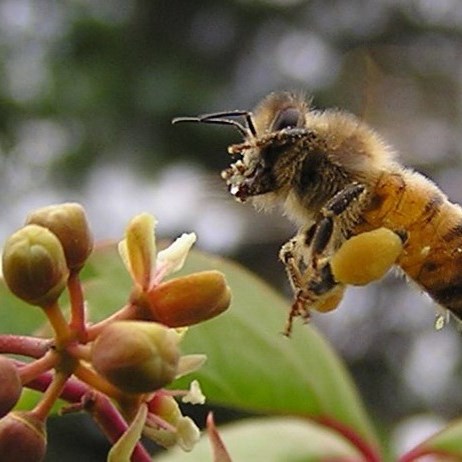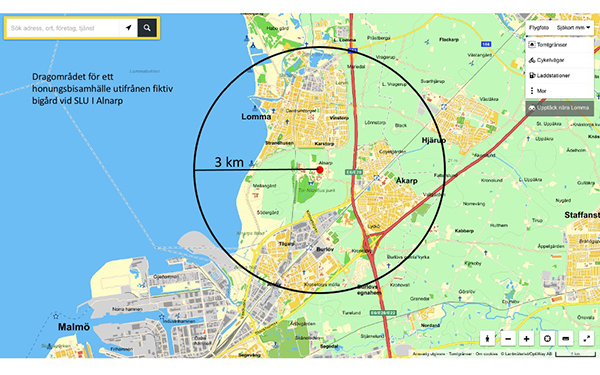Contact
Lotta Fabricius Kristiansen
Research assistent at Department of People and Society
Telephone: +4651167116, +46730577151

Citizen science for evaluating pollinators' availability of nectar and pollen plants from a landscape perspective. Voluntary commitment and the driving force for local change management.
Bee health includes many factors. In addition to honeybees being free of diseases and parasites, the surrounding landscape also needs to meet the bee colonies' need for nectar and pollen in order for them to develop into viable units. The beekeeper chooses suitable staging places to keep bee colonies healthy.
Tools to evaluate the ability of the draught area (approximately 28 square meters) to meet the needs of bee colonies are lacking. It is usually about testing and evaluating survival.
In order to stimulate activities in the surrounding landscape area that act positively on bee health, a practice-based measurement tool, with clear indicators, could serve as a basis for incentives for supportive measures from other relevant actors in the area. In addition to creating good conditions for honeybee food availability throughout the season, it can also give a picture of the situation of other pollinators' conditions in the same area.
In the project, we want to evaluate the possibility of correlating bee pollen collection in beekeepers in selected areas with the total flowering flora availability throughout the season, through synchronized flora inventory in the same areas. This is done through citizens' research initiatives. In this way, we build relevant competence among participating actors and develop a methodology for engagement and participation at the local level.
The Swedish Environmental Protection Agency shall coordinate and guide the authorities that have activities that directly or indirectly affect the conditions for wild pollinators. Here you can read more about the work.
Pollinering (naturvardsverket.se) (so far only in Swedish, though).
By promoting food availability for wild pollinators, honeybees are also favoured. In order to concretize activities to a local practical proximity, citizens' observations are important because traditional research cannot possibly achieve the same resolution, presence or scope in data collection. Furthermore, researchers normally lack the local knowledge that is often required to know where something is located (compare, for example, with the landscape rivers developed through non-profit initiatives, but which for research are of central importance). Quality assurance is done by developing reporting systems. This creates increased participation and a deeper understanding of what measures are needed to strengthen the quality of an area.
1. Develop a methodology with a view to engaging local beekeepers and other actors in data collection and local measures
2. Building a collaboration platform between actors from a territorial perspective
3. Integrate beekeeping/pollination into discussions on green infrastructure and sustainable land use
4. The objective of the natural sciences is to find a practice-based method for evaluating the bearing capacity of a landscape area with regard to the availability of nectar and pollen plants for honeybees and other pollinators
5. Create commitment to pollination for increased bee health
The areas selected to try in are two areas in Skåne and two areas in Västra Götaland that represent a more undamaged landscape and a more varied landscape.
Tap the image and you will receive a manual in PDF format for how to report your observations.

Lotta Fabricius Kristiansen
Research assistent at Department of People and Society
Telephone: +4651167116, +46730577151